Six of the best winter adventures in the Yukon
Canada’s far northwestern territory is a land of frozen wilderness and an elemental place for spirit-lifting adventures
Why go?
Travellers flying into Whitehorse, the Yukon’s territorial capital, first encounter a range of snow-plastered mountains, before great, wide river lands that rally northwards to make their bid for the Arctic Ocean watershed. This is a realm of tilted peaks, frozen rivers, silvery lakes, serpentine glaciers and ice roads, and where the idea of having a wilderness adventure in North America really begins.
Poet Robert Service, also known as the Bard of the Yukon, described it fittingly enough: “It’s the beauty that thrills me with wonder,” he wrote. “It’s the stillness that fills me with peace.”
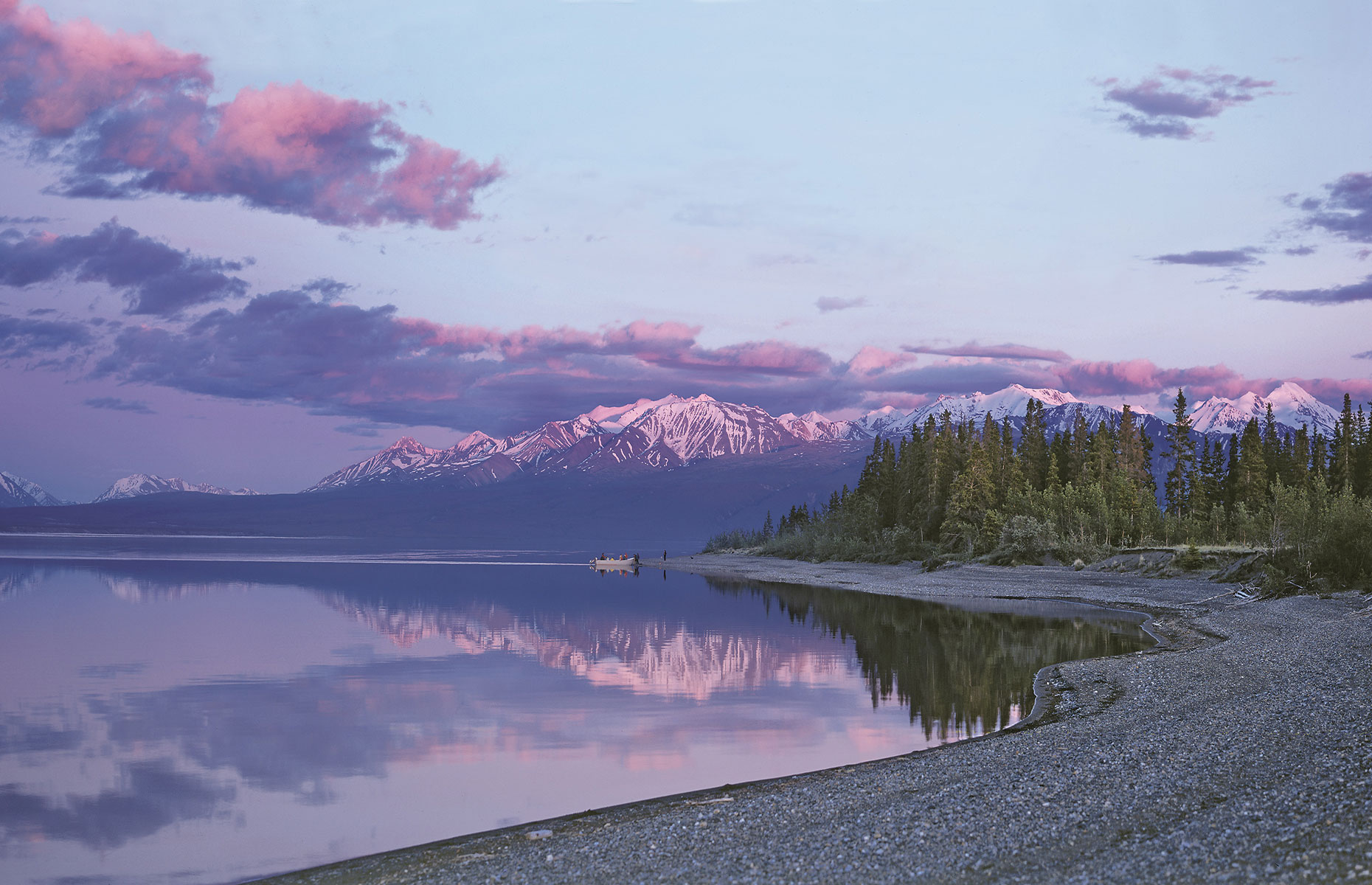
1. Dogsled the Southern Lakes
As well as spending time with majestic canines, a dogsledding trip gives a prime view of the Yukon’s extraordinary beauty up close, at speed and mirrored back from iced-over lakes and rivers. Of the places to try the winter pursuit – and there are many – the frozen Southern Lakes of Tagish and Marsh are settings where every hotel and backcountry lodge has a husky team on call.
Keep it simple with a half-day tour for around $220 (£130), or go the whole nine yards with an immersive, week-long dog-mushing course at Sky High Wilderness Ranch on Fish Lake in Kwalin Dun First Nation territory outside Whitehorse.
The imperative here is not only to learn to sled, but to connect with the huskies in the wild as an ethical musher. After the expedition ends, travellers are pampered at a beautiful lodge, aura cabin or yurt. For more action, visit during February for the annual 1,000-mile (1,609km) Yukon Quest, the world’s toughest dogsled race.
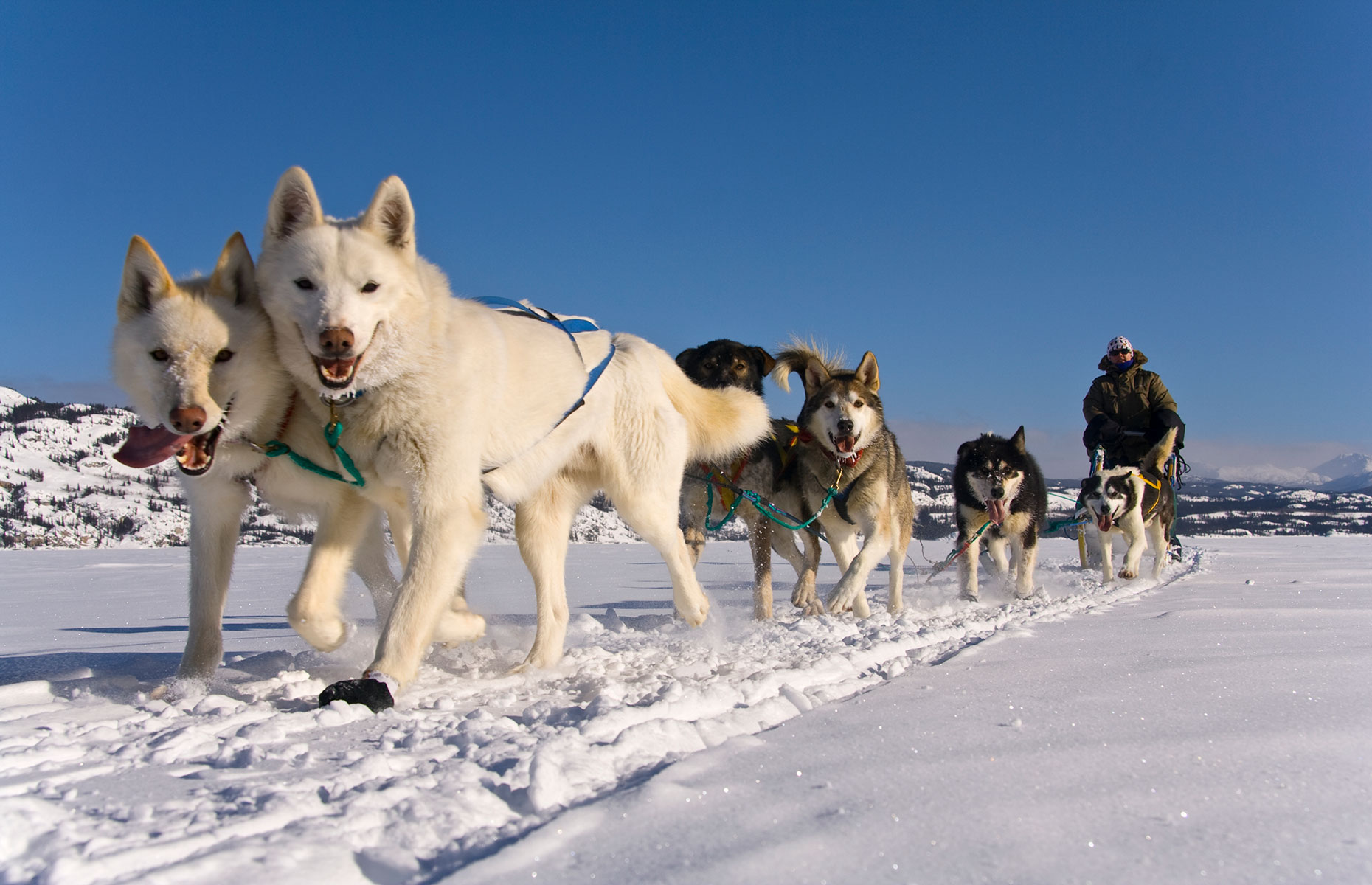
2. Canoe under the Northern Lights
When Daniel Sams of Whitehorse-based Terra Riders launches his canoe into the inky-black of Lake Laberge on the Yukon River, his fellow paddlers are moved to wonder how on earth it’s possible to drift effortlessly through thin ice, in the dark. But this is a nightly ritual from September to early December for the adventure tour guide, who has learned how to plot a course through the congregating ice before it freezes solid for the remainder of the winter.
As wonderful and contemplative as this experience is, there is even greater magic – a sky full of stars hanging low and the nightly prospect of the aurora borealis, which can shine so brightly it reflects back at you from the water’s surface. Expect to pay around $179 (£106) per person and note that trips are subject to weather conditions.
READ MORE: Stunning images of Northern Lights around the world
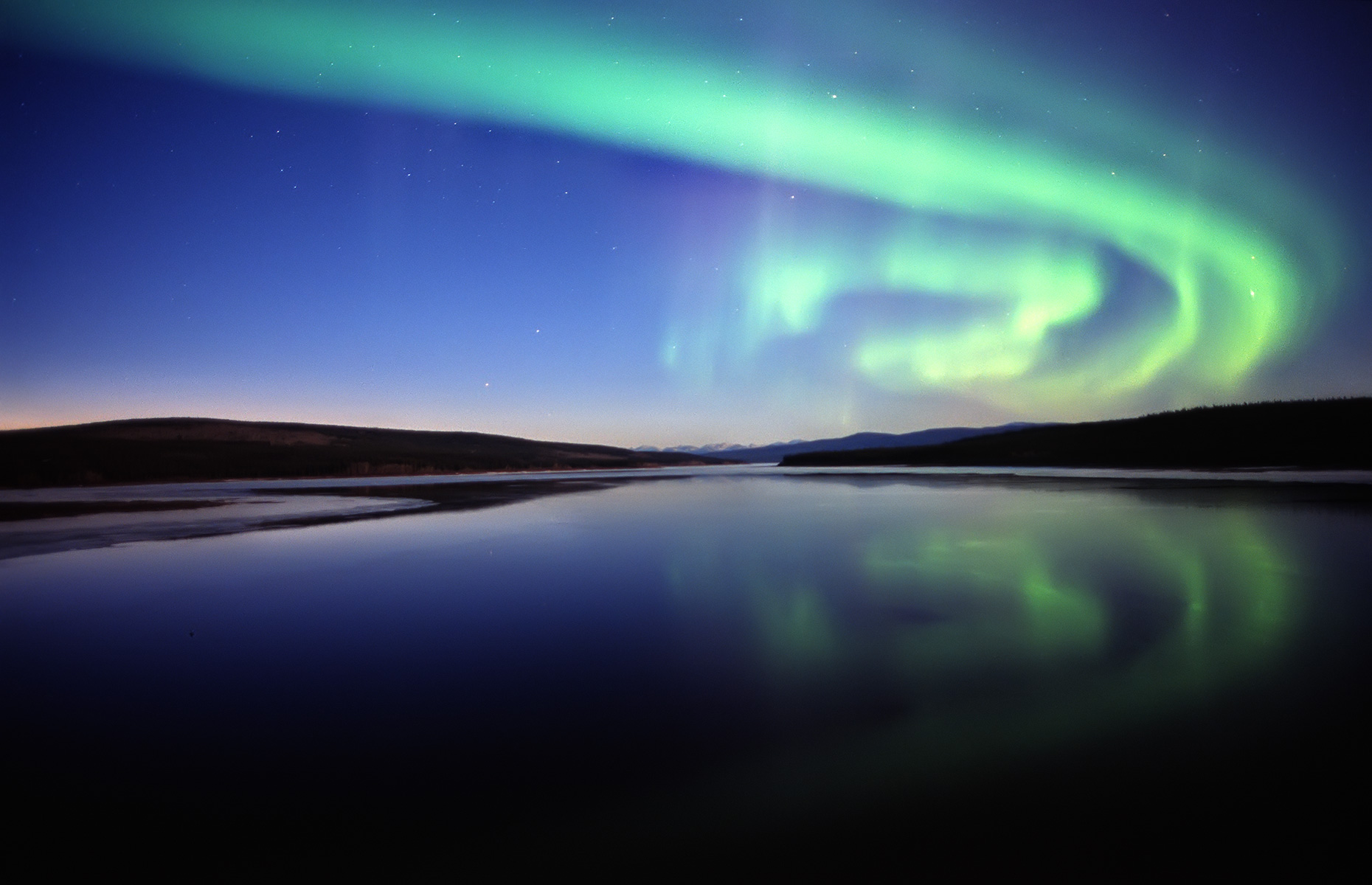
3. Snowshoe the Carcross Desert
To dip a toe into a world of two extremes, drive one hour south of Whitehorse to the town of Carcross, home of the Carcross/Tagish First Nation. Wonderfully ripe for adventure, this is where you can find the 1,969 feet-wide (600m) Carcross Desert, one of the world’s smallest dust bowls and a miniature kingdom formed from sand particles carried by wind from nearby Lake Bennett.
It’s the combination of this topography with nearly 51 inches (130cm) of annual snowfall that gives the place its otherworldliness, making it unique even in the Yukon. In summer, dirt biking and sand boarding are popular but come winter, after a blizzard, the rippling dunes become the realm of cross-country skiers and snowshoers. Hire a set of snowshoes for around $23 (£14) in Whitehorse with Epic North.

4. Discover Dawson City’s golden era
A trip in the Yukon would be incomplete without a history lesson on the Klondike gold rush, when thousands of prospectors stampeded north from Whitehorse to the gold fields of Dawson City to strike it rich. In the former gold mining capital, there is a feeling that time has stopped and the banks, hotels, saloons and vaudeville theatre that remain carry the hallmark of Wild West films and the boardwalk that connects them the echoes of yesterday.
READ MORE: Canada's incredible abandoned buildings
Such histories are kindly remembered at the Dawson City Museum, housed in the ghostly Old Territorial Administration Building, while the Jack London Museum focuses on the life of the Call of the Wild author, who lived in a trapper’s cabin here during the gold rush.
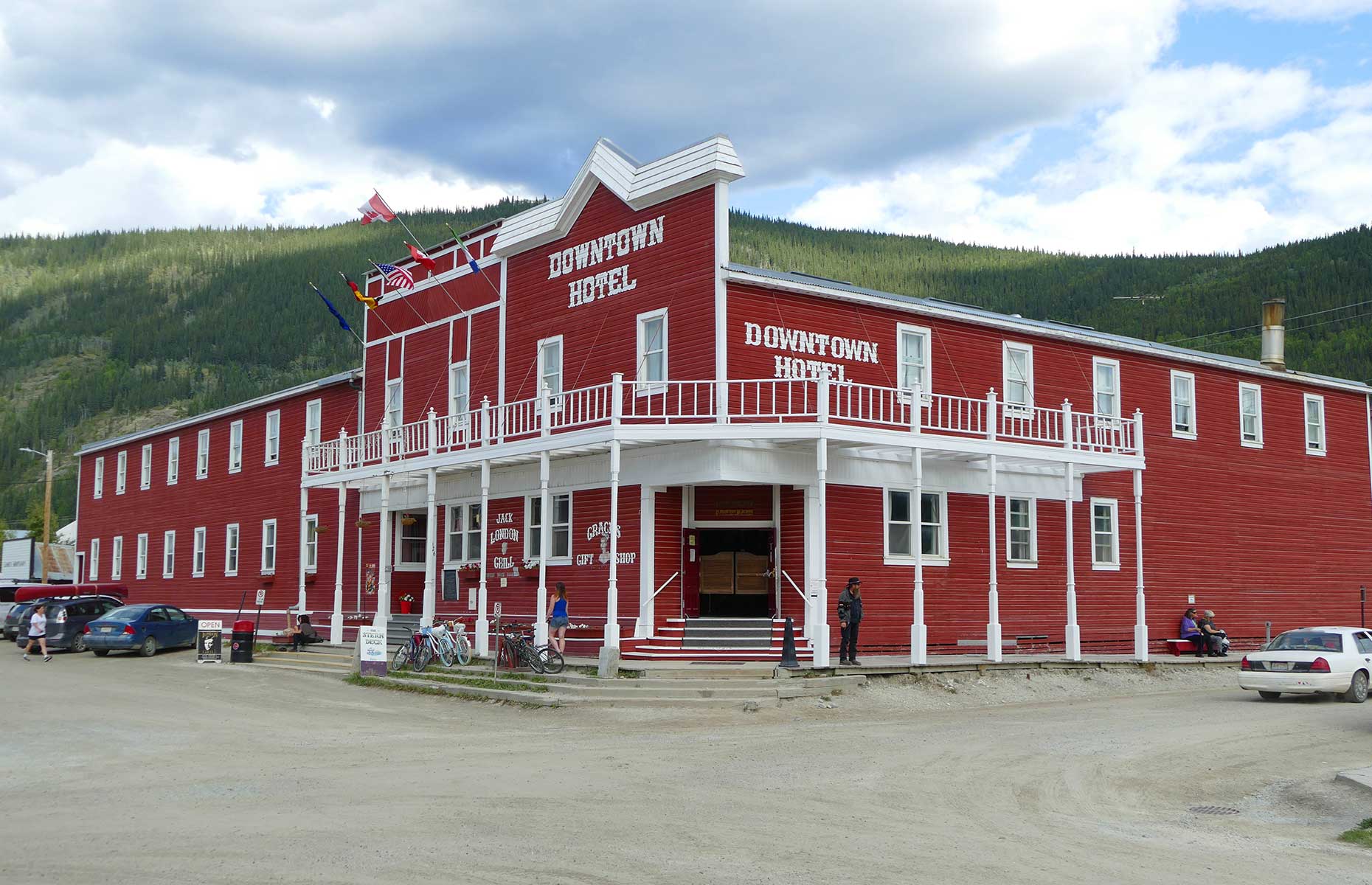
To meet the gold diggers of today, drop in to the Downtown Hotel for a winter warmer drink, namely the hotel’s signature sourtoe cocktail – a shot of Kentucky grain whisky with a desiccated human toe macabrely placed at the glass’ bottom. Touch the toe with your lips and you’ll be treated like a homecoming hero.
5. Ski Mount Sima and beyond
Whistler, Banff, Lake Lousie and Mont Tremblant are ski resorts most travellers to Canada are familiar with, but Mount Sima? Hardly. And yet, this upstart ski hill of deep, powdery glades and fir-lined runs outside Whitehorse is oddly reminiscent of some of Europe’s best small mountains, before they were overrun with hotels, piste bashers and rules. The result is an one-chairlift resort, with ample virgin terrain to explore and only locals to share the constant prettiness with.
Most remarkable of all, though, is to fly sky high with adventure tour operator Yukon Heli Ski. Its flagship selling point is Tiny Town, a leave-no-trace, pop-up ski village with guesthouses that is winched up onto unnamed hilltops every season, before being disassembled and packed away into storage again for the following year.
READ MORE: These are Canada's most adorable small towns
6. Drive the Dempster Highway
The Yukon’s greatest road, a simple two-lane affair, traverses the province from Dawson City, before crossing the Peel River to the Northwest Territories and makes for a wild ride. It’s named after Welshman Jack Dempster, a mounted policeman who became known for acts of bravery in the territory’s sub-arctic conditions in the 19th century, and, despite only being built in 1979, feels implausibly old.
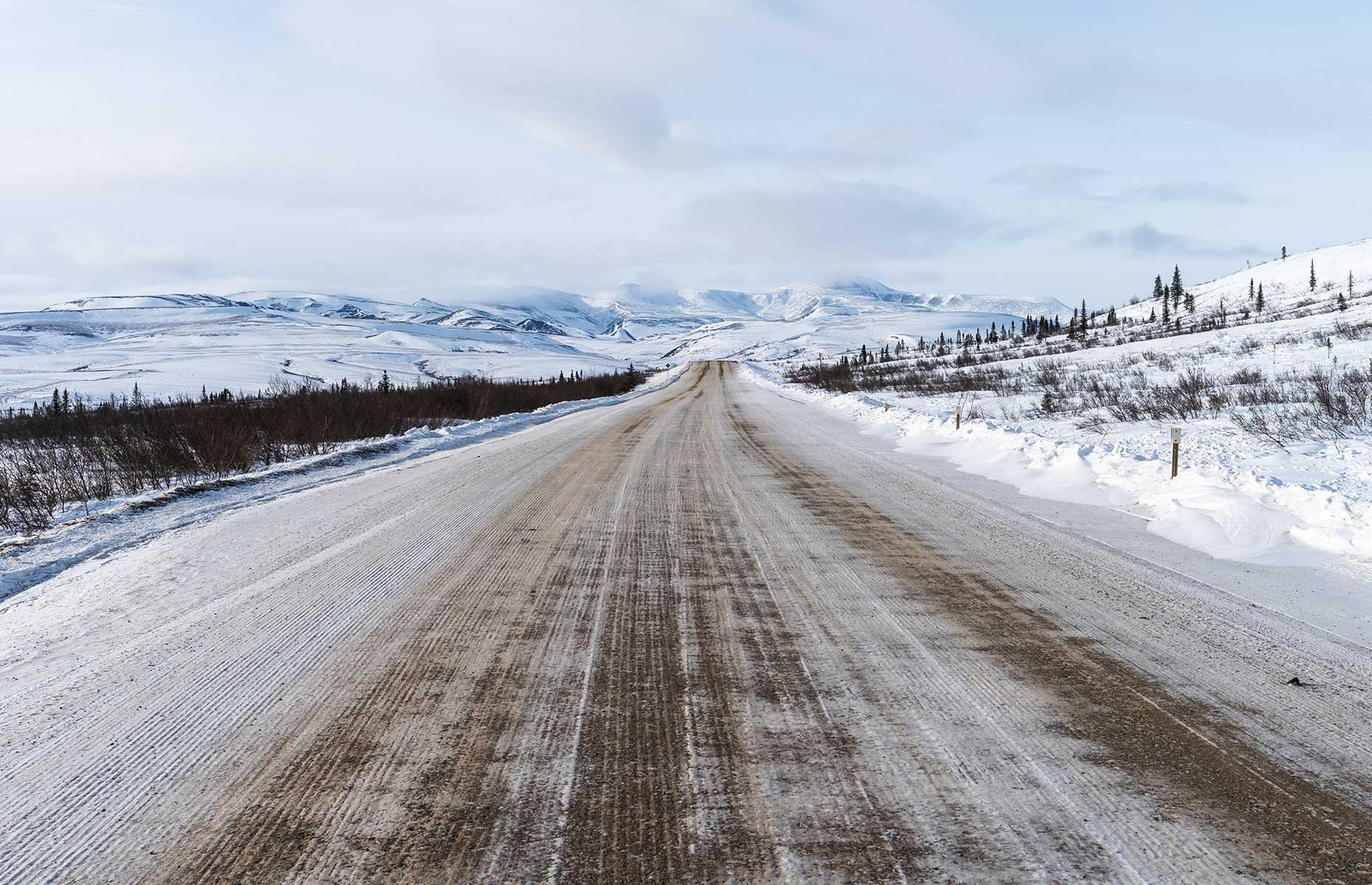
In winter, like most of the landscape, the gravel road is snow-covered and crowded in by near-eternal mountains and boreal forest, which induces a kind of dream-like state. A stop in Tombstone Territorial Park for a snowshoe safari to look for migrating caribou is a must, as is cross-country skiing across the tundra. Aurora viewing, from October to April, is also practically guaranteed.
READ MORE: What to do in Ottawa
Lead image: Pi-Lens/Shutterstock
Comments
Do you want to comment on this article? You need to be signed in for this feature
